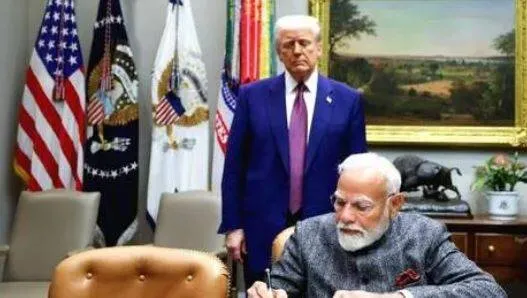

The country that once strongly advocated for global free trade stunned the world with its declaration of significant tariffs on all nations with which it had trade relations. This abrupt shift in policy led to widespread protests across the globe and even drew criticism from within the United States itself. In response to this backlash, President Donald Trump reduced the proposed retaliatory tariffs to 10% for countries other than China for a temporary period of 90 days. The U.S. explained this move as an attempt to reduce its trade deficit with other nations, expecting that by doing so, it could strengthen its domestic market.
Trump had returned to power with the promise of “Making America Great Again” and turning the U.S. into a productive powerhouse. In the economic arena, imposing tariffs was the strategy he chose. However, economic experts point out that such a unilateral move could create adverse conditions for the U.S. itself. As part of the liberalisation policies the U.S. once supported, globalisation had significantly impacted and nearly dismantled its traditional manufacturing sector. Many factories in various American states have shut down, resulting in the loss of thousands of jobs.
The new employment landscape born from globalisation favoured technological advancement and merit, placing local, less-educated, and unskilled workers in a disadvantaged position. Consequently, many traditional American workers, lacking technological knowledge and competitive skills, found themselves unemployed and gradually impoverished. Globalisation and liberalisation, while fostering capitalist growth, also encouraged massive immigration to the U.S., further diminishing job opportunities for native citizens. Recognising these realities, traditionalist Republicans in the U.S. are now taking an anti-globalisation stance.
It was during the presidency of Ronald Reagan in the 1980s that globalisation gained significant traction in the U.S. However, its primary beneficiaries turned out to be developing countries. For instance, a product that costs a certain amount to manufacture in the U.S. could be made for one-third of that cost in China, Vietnam, or South Korea due to their lower wages—something unachievable in the U.S. Trump asserted that he would bring back the lost factory jobs. At the same time, China, a capitalist-communist hybrid state, has emerged as the biggest challenger to the U.S. on multiple fronts.
The U.S. currently has a large trade deficit with China. Trump’s administration imposed a 34% tariff on Chinese goods. Adding a previous 20% levy brings the total tariff on Chinese imports to 54%. In retaliation, China also imposed tariffs on American products, triggering a trade war. During globalisation, massive capital flows from the U.S. to China took place. Today, most of the computers, cell phones, digital gadgets, and machinery found in U.S. markets are made in China. Additionally, China holds U.S. treasury bonds worth $750 billion, posing a potential financial risk for the U.S.
The U.S.-China trade war is highly complex. The pressing question now is whether this situation will benefit India. The U.S. has a trade deficit of $35.31 billion with India. Although Trump referred to Prime Minister Narendra Modi as a close friend, the former didn't extend any special exemptions to India. The tariff imposed on Indian goods stands at 26%. Earlier, the U.S. had already imposed a 25% tariff on steel, aluminium, and automobile products imported from India.
Though this 27% duty poses a challenge to Indian exports, market experts believe India is in a comparatively better position than other countries that compete in the export market. However, these tariffs may pose challenges for Indian domestic companies. If India continues to invest in logistics, infrastructure, and maintains policy stability, it can take full advantage of the opportunities presented. Experts argue that U.S. actions may act as a catalyst for India to benefit from the global supply chain restructuring.
As China is now a declared rival of the U.S., American businesses are increasingly turning their attention toward India, which is expected to benefit. According to data from 2021–22 to 2023–24, the U.S. was India’s largest trading partner. In the new world order, that position is likely to continue or even expand.
In addition to tariffs, the U.S. is also taking strong measures against immigration. The traditionalist Republican government sees this as a solution to domestic unemployment and poverty among native workers. However, the announcement of retaliatory tariffs has already led to inflation and currency depreciation within the U.S. The country’s projected economic growth for 2025 is only 1.7%. The World Bank and international rating agencies predict this number could decline further, indicating stagnation in economic growth.
As the U.S. economy slows, exporting countries will face even greater hardship. In today’s interconnected world, where all nations are interdependent, no one country can afford to make global-impact decisions unilaterally. One thing is clear: America is heading into a period filled with significant challenges.

(The author is a former president of FOKANA and the founding president of NAMAM (USA)